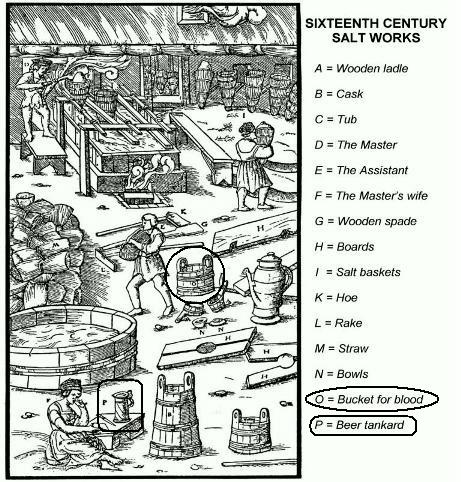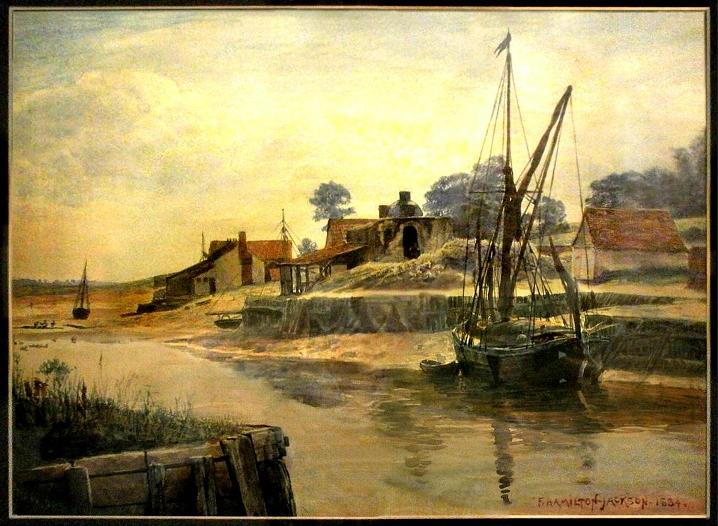Salt Extraction on the North Bank of the
Blackwater
|
Contents |
|
Introduction
For over two thousand years the north bank of the Blackwater Estuary, in Essex has been a centre of sea salt production. Goldhanger and Heybridge were at the centre of this in the past, and Maldon and Goldhanger still are. The various reasons for this are geographic, geological and meteorological, although in the past these reasons would not have been understood:
o The estuary situated in low lying land which naturally develop large numbers of tidal pools and salt mashes.
o All estuaries have greater tidal extremes than open coast lines, which results in a large areas of salt marshes.
o The high concentration of clay ensures that the pools do not drain away at low tide.
o The lowlands on the UKs east coast have very low rainfall, resulting in little dilution by rainwater.
o Above average annual sunshine and higher wind speeds in the exposed areas, results in high evaporation from the pools, leaving behind the salt.
o Each incoming tide transfers the contents of pools further up the estuary, increasing the salt concentration as it goes.
o Fresh water flowing down the river bypasses creeks and inlets, resulting in greater salt concentration in these places.
o Clay was to hand for the man-made evaporation tanks, kilns and pottery vessels used at the sites in the past.

naturally accumulating salt
at the edge of a pool in
Goldhanger Creek at the end
of a dry the summer
The large number of "red hills" located all along the north bank of the Blackwater are evidence of the very early salt works, which was caused by the burning activities on the clay soil. These red hills are all located in the vicinity of the seawalls, which were generally built after salt extraction activity, some being just inside and some outside the seawall. It is likely that the building of the seawalls brought about the end of salt extraction activity at a particular location as the salt mashes were destroyed by the new wall. About 330 red hills have been identified in Essex, with most being on the north bank of the Blackwater. This very large number may be I part the result of moving to new sites over the centuries.

artists impression of an
early saltworks
Many of the red hills were identified and documented in Victorian times, however ploughing has eliminated many of the mounds and all that remains now are the discoloured areas of soil only visible when crops are not present. The red hill sites around Goldhanger and Heybridge have been the subject of most intensive archaeological investigations and reporting in the past, which probably reflects that these were the most recently activate works. Both of these were superseded by the Maldon salt works in the 19th century, which is still operating on the river bank in the town today. However, in the last few years Maldon Crystal Salt Company has returned to the north bank of the estuary by creating a new extraction facility at Longwick Farm near Goldhanger.
Possible reasons why the original
Goldhanger works disappeared...
o A seawall built at Bounds Farm in 1790
o The arrival of the Coastguards adjacent to the saltworks in 1820
o The end of the Salt Taxation in 1825
o The disappearance of the Goldhanger fishing fleet - date unknown
o Fire is know to have destroyed the buildings - but date unknown
o The larger coal ships disembarked at Heybridge & Maldon
o Competition from the bigger and more efficient Heybridge works
Possible reasons why the Heybridge works
moved to Maldon...
o the discovery that the deep water in the main river channel was in fact saltier than at Heybridge
o The estuary in the vicinity of the saltworks began to silt up, restricting access for larger coal ships
o The availability of coal on the Maldon Hythe
o to be close to the newly built and fashionable salt baths on the Hythe
o to be near to the fish pits used by Maldon fishermen on the Hythe
o The Heybridge site became bankrupt and was sold and developed as a mill and maltings
o New investment originating within Maldon developed new products
Before rock salt and electricity became
available, sea salt was a vital commodity with many uses:
o salt was an essential preservative for fish, meat, cheese & butter
o it was crucial ingredient in bread making, which controls the effect of yeast
o as a general food flavouring, which detracted from the taste of decay
o an antiseptic for disinfecting wounds
o a water softener, and still used soap, toothpaste, bathsalts, etc.
o a vital supplement in domestic & farm animal feedstuffs
o it was mixed with oil to give oil lamps a brighter light
o the salt glazing of pottery
o a flux used in glass making
o it was used in leather tanning
As well as having all of
these uses, records show that there were other local uses and aspects:
o The mashes were ideal for rearing sheep, and the salt was used for making ewes cheese.
o Fish from the estuary were initially kept fresh in the fish pits, but was salted before transportation to market.
o When rock salt became available, the "salt-on-salt" process was used to increase local output of pure white salt.
o The Goldhanger works was not licensed for white salt production so this was probably smuggled out via Tiptree Heath.
o The Johnson family at Heybridge developed many uses for their salt, mainly as an agricultural fertiliser.
o At Maldon the salt was use for the hot and hot salt baths that were fashionable in the Regency period.
o When rail links improved the bath salts were packaged and shipped throughout the UK.
o Only relatively recently have the large pure white crystal flakes been marketed for culinary use...
Evolution of the
local saltworks
This timeline is based on information
extracted from the many documents and newspaper articles that have been
collected in the local archives over the years. There are some contradictions.
2000BC Salt extraction was taking place in the Bronze age and Iron age on the north bank of the Blackwater
100AD The Romans exploited the sea salt resource on Osea Island and at Maldon
200AD The Goldhanger and Heybridge saltpans where know to be in operation
200AD A Romano-British settlement was close to the Goldhanger Creek, leaving a red hill. See... "Possible Roman Road"
1085AD Goldhanger and Heybridge salthouses were listed in the Domesday Book along with eighteen others along the Blackwater

map showing the cluster of Salt Pans on the north bank
of the Blackwater referred to in the Domesday Book
1086 The Domeday book refers to "Hugh de Montfort holding one and a half salina in Goldhanger"
1200s Seawalls were progressively built around the Blackwater over the next 500 years
1260s A knight pays rent to the King Henry III for use of the Goldhanger saltworks
1340 A Latin Missal in All Saints Maldon has a blessing for the salt
1390s The Guild of Saltmakers were thriving throughout Essex
1564 Queen Elizabeth 1st planned to monopolise and patent salt production in the UK, but the plan failed
1600s Coal progressively replace wood to heat the salt pans, which was delivered in flat bottomed barges
1639 Date of the
earliest reference to the Johnson family owning a local saltworks
1640 The "odious" salt tax was introduced
1651 Essex Court Sessions refer to a "Salt House" in Goldhanger (a wholve was an arched or covered drain under a path)...

1670 Rock salt was discovered in Cheshire
1693 The post of "Salt Officer" was introduced to control smuggling and unlicensed production
1702 A "Salt
Board" was created by Queen Anne, with Salt Officers to collect
duty on removal from the saltworks
1734 Date of earliest reference to laws limiting the refining rock salt to only Heybridge on the Blackwater
1768 Charles Coe, wealthy Maldon businessman was owner of the the saltworks land and property
1777 The earliest reference to "The Maldon Salt Works" (most probably located at Heybridge)
1781 Edward Bright the 2nd of Maldon was the proprietor of the Heybridge salt works
1784 A local newspaper advertisement referred to the Heybridge Salt Office...

1785 A bill for abolishing salt duty was presented in parliament (but was not passed)
1785 Maldon was recognized as an important salt-making centre with a reference to "the famous Maldon salt"
1786 Philip Morant wrote "at Goldhanger there was a considerable saltworks which used rock salt"
1790 A seawall was built around Bounds Farm, Goldhanger to convert the saltmashes to fertile land
1790 Saline baths near the salt works at Maldon brought new prosperity to the town
1795 Justice of the Peace had a duty to licence only one saltworks at Heybridge...

1805 The tax on salt rose to ₤30 a ton, creating much public resentment
1805 The seawall was built around the Heybridge saltworks
1814 A patent was registered by W Johnson of Heybridge for an improved process for salt making
1810 The Goldhanger works were abandoned and a large works was built about this time in Heybridge
1818 The salt-works was still working at Goldhanger in this year, when Thomas Cromwell wrote...

from Excusions in the County of Essex, T K
Crowell, 1818
1818 The warm salt water baths at Maldon prove highly useful to the inhabitants
1819 Goldhanger and Heybridge using rock salt from Cheshire
1820 W. Johnson, Essex salt manufacture was declared bankrupt
1820 Heybridge saltworks was up for sale
1822 Coastguards built an observation hut right next to the Goldhanger saltworks
1823 Quote: "Maldon, famous for its salt, made in reality in the parishes Goldhanger and Heybridge"
1822 Essex & Suffolk Insurance Society reported a fire at the Heybridge Salt Works
1823 Bridges, Johnson, and Co., of Heybridge, had disappeared by this date
1823 Quote: "The present building at Maldon was built when sea water bathing took place alongside at Bath Place Wharf"
1825 The domestic salt tax was abolished
1825 Heybridge saltworks up for sale (again)
1825 The Heybridge works were converted to a mill and malting...
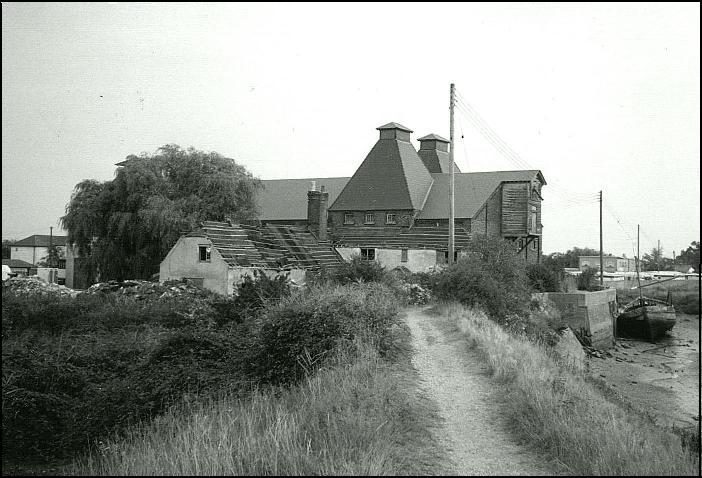
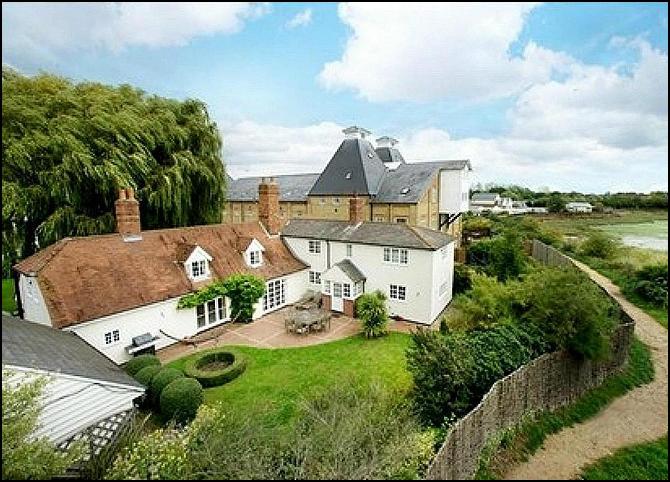

The derelict saltworks & salt office buildings in the
1950s (in the foreground on the left) and as restored today
1831 "Extensive
salterns...using steam" recorded at Goldhanger...

1833 The census for this year shows only one salt-maker in all of Essex
1834 The Essex Marine Salt Co is created at Heybridge
1838 Pigotʼs pocket atlas refers to a saltworks at Goldhanger...

1840 "Extensive saltworks" reported at Heybridge
1843 "Patent Salt Company" buildings at Heybridge were up for sale
1845 Deeds refer to: messuage with Salt office and yards called the Salt Cote and 1 acre at back of Malting
1848 White's Directory states: Heybridge, here were formerly extensive salt works, but only a small one remains
1855 A patent registered by W Johnson, Hall Farm, Heybridge for improved process for making salt
1856 Edward Bright was selling "clean salt and rock salt" from the Coal Wharf, Heybridge
1856 Robert Worraker sold the Maldon Sea Salt Company in this year
1861 Quote: "The former considerable saltworks at Heybridge is down to one small factory"
1866 Maldon Salt was recommended as treatment for Typhoid and Cattle Plague
1871 The census for this year shows four salt-makers in Essex
1874 A reference in this year to "the old saltworks at Heybridge"
1883 OS map shows the "Essex Salt Works" at the location todayʼs Blackwater Sailing Club site...

1884 well know Maldon artist Hamilton Jackson painted this scene which shows the Maldon salt works
just behind the lime furnace...
1889 The Red Hills Exploration Committee excavates the old saltworks at Bounds Farm, Goldhanger. . .

From... "A
History of salt Making",
Miller Christy, Journal of The Essex Naturalist, 1906
1890s In the summer months the owners of the marshes and oyster beds at Salcott Virley would lay canvas sheets on the mud flats, leave them there for several tides and then lift the sheets, scrape of the salt and sell it to Maldon Salt Company at Heybridge.
1892 A drawing of the Heybridge works at Mill Beach from this time appeared in the book entitled:
‘Essex Highways, Byways & Waterways’ by CRB Barrett, however it is possible that the sketch was made much earlier...

See... Barrow Marshes -windmill
1919 Map
of the saltworks and red hills at Bounds Farm, Goldhanger, also showing the
Fish Pits and Coastguard hut...

1922 The Inventory of the Historical Monuments in Essex, Vol-3: North East, reported...

1922 The Maldon Crystal
Salt Company was purchased by the Osborne family...

1935 A local newspaper
reported that the high level of salt in the air at Goldhanger protected the
fruit trees from early frosts
1935 Goldhanger Creek
had so much salt it was ideal for learning to swim...

1940s Maldon Crystal Salt packaging from this date...

1960s The Maldon facility at
this time...

Clive
and Cyril Osborne
1980s A large metal barge was moored adjacent to the Maldon works to hold ‘Spring Tide’ saltwater for later processing...
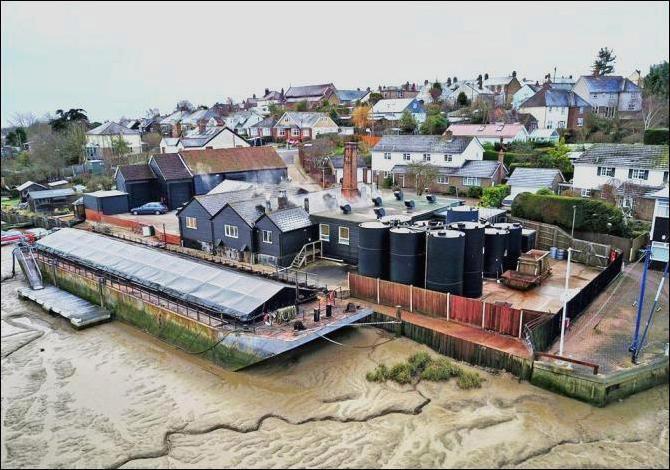
1995 Colchester Archaeological Group published "Losing Savour: the Decline of Essex Salt" in their Annual Bulletin at...
caguk.net/wp-content/uploads/2013/01/Bulletin-39.pdf (pages 3-10)
...the article refers to Bounds Farm Goldhanger, Faulty/Vaulty Manor and Heybridge/Barrow Hills.
2001 The Maldon Salt Company opened a packaging facility and offices at Wycke Hill, Maldon...
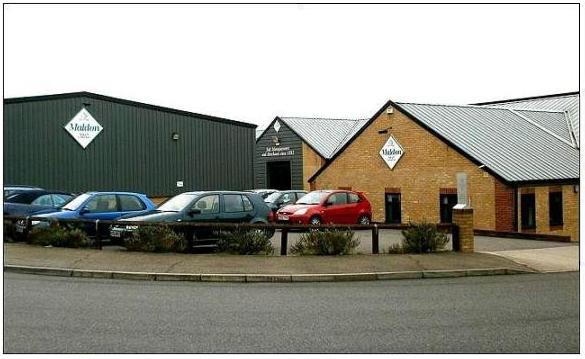
2006 Maldon Salt Co opened a new processing facility at Longwick Farm near Goldhanger...

2013 The Longwick site was expanded to increase
production...

2014 Amateur radio enthusiasts “DXing” start using the exceptionally salty water in the estuary at
Goldhanger to
enhance their radio transmissions. See... Using the salt concentration to aid radio transmissions
2016 A large lagoon was built at Longwick to save more
salt water from the Spring Tides...
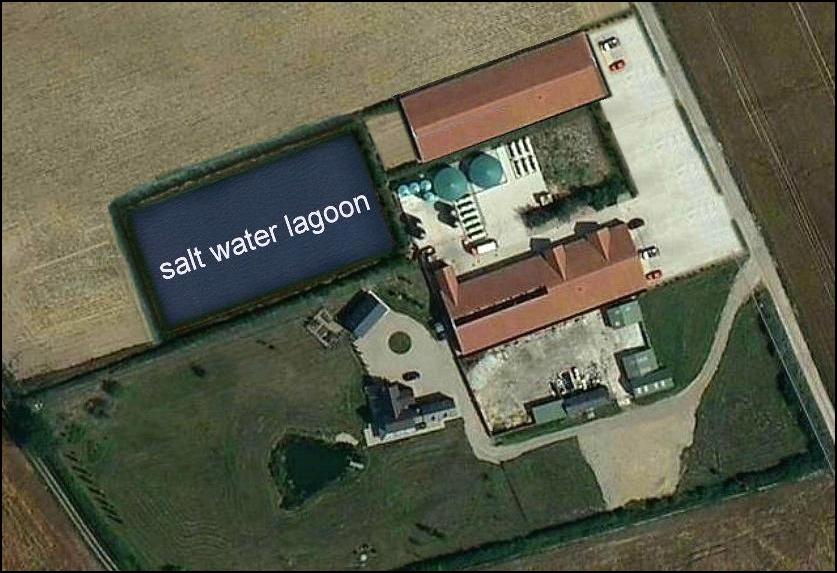
2021 The Maldon Salt Company opened another packaging
facility at Wycke Hill...
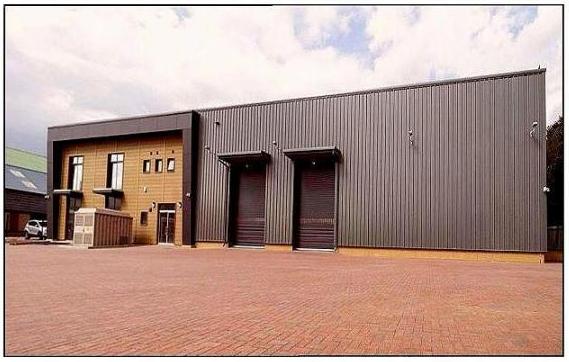
2021 The Longwick site is again expanded to increase
production further still...
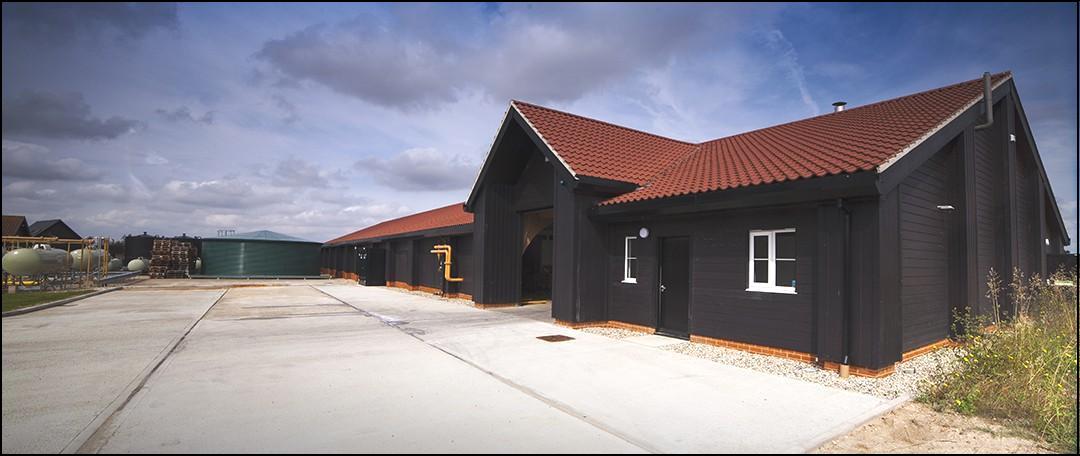
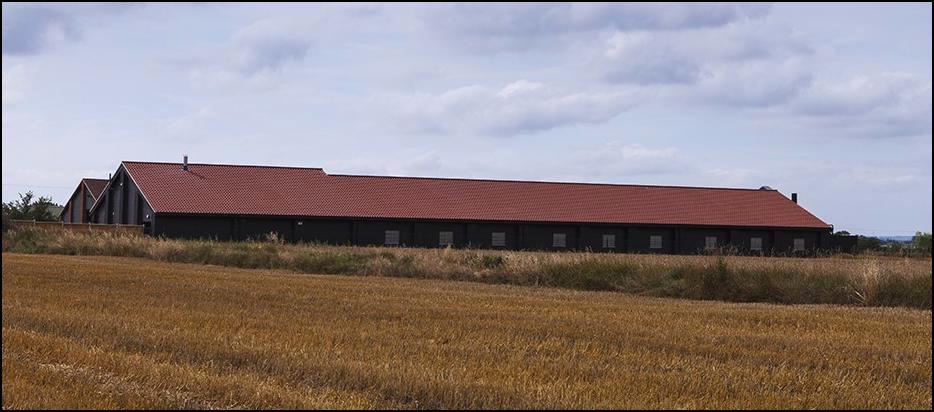
2023 a second lagoon has been constructed to save
more salt water from Spring Tides...
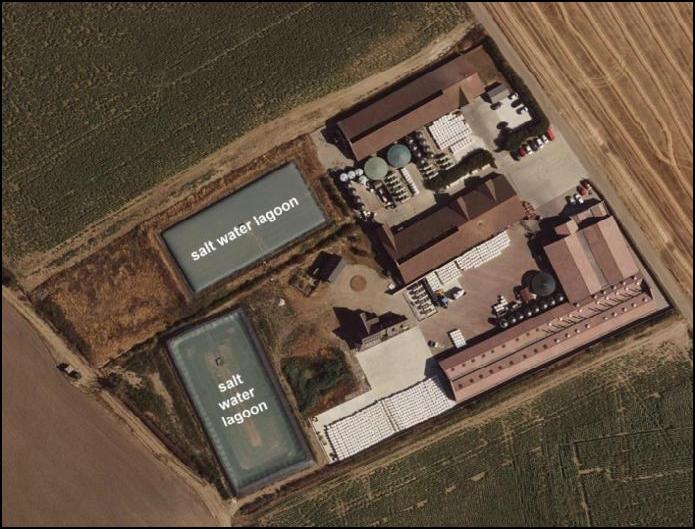
there are now over 60 salt pans at the Longwick facility
and the salt is exported to 55 countries around the world
Maldon Salt
Company early videos
www.youtube.com/watch?v=BvbcUY-yD-k www.youtube.com/watch?v=n0PoXqCm25g
“Salty Business” on Pathe news
in 1968 (1.30-mins) with chef
Oliver Rowe and MD Clive Osborne in 2012 (3-mins)
Ownerships
of the local saltworks in the past
Contemporary newspaper articles, documents held in Essex Records Office(ERO), reference books and our local archives reveal that the Heybridge and Maldon operations had many changes of ownership over the centuries...
|
Dates |
Company
|
Owners
|
Source of info.
|
|
1585 |
not known |
Thomas Burlz, Maldon alderman |
ERO |
|
1639 |
not known |
Widow Johnson Adam Johnson |
A Prospect of Maldon W J Petchey, 1991 |
|
1650 |
Goldhanger saltworks |
Thomas Saffold |
Goldhanger - an Estuary
Village, Maura Benham, 1977 |
|
1738 - 1768 |
the Salt Works |
Charles Coe |
J R Smith, ERO |
|
1779 |
the Salt Works |
John Coe |
J R Smith, ERO |
|
1777 - 1892 |
Maldon Salt Works |
Robert Worraker 1st Robert Worraker 2nd T Worraker |
Essex Countryside Magazine Sept 1975 |
|
1780 - 1790 |
the Salt Works |
Edward Bright |
J R Smith, ERO |
|
1801 |
the Salt Works |
Mary Bright |
J R Smith, ERO |
|
1814 - 1820 |
Bridges, Johnson, and Co. |
William Johnson James Tuck William Bridges |
Miller Christy & contemporary
newspapers |
|
1822 - 1825 |
Bridges, Johnson, and Co. |
James Tuck William & John Bridges |
Miller Christy & the London Gazette |
|
1826 - 1882 |
Bridges, Johnson, and Co. |
J Worraker or R Worraker 2nd,
Thomas Worraker |
Miller Christy voters register |
|
1834 - 1841 |
Essex Marine Salt Company |
J G Rolfe, Pooley, Blain,
White, Dr Epps |
contemporary newspapers |
|
1834 - 1850 |
Salt Works Company |
Alfred May |
contemporary newspapers |
|
1843 |
Patent Salt Company |
contemporary newspapers |
|
|
1845-1851 |
Salt office, & Salt Pond |
The Coape family |
ERO |
|
1851 - 1856 |
Salt Warehouse |
Edward Bright |
contemporary newspapers |
|
1874 |
Marine Salt Company |
William Wakeling |
London Gazette |
|
1882 |
Maldon Crystal Salt Co |
T E Bland |
MCS Co website & newspaper obituaries |
|
1901 - 1921 |
Maldon Crystal Salt Co |
E E Brown |
MCS Co website & newspaper obituaries |
|
1922 - date |
Maldon Crystal Salt Co |
the Osborne family |
MCS Co website |
|
It is clear that for most of its existence the Heybridge works product was known as the Maldon Salt. It is difficult to determine how many companies there were at any one time, or whether the same operation had more than one name, and if and when they merged. Contemporary newspaper reports of court cases indicate that the Essex Marine Salt Company was a fraudulent operation which today would probably be classed as a Ponzi scheme.
|
|||
return to...

